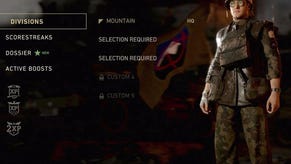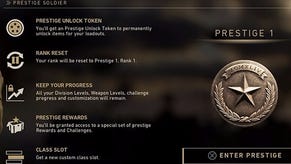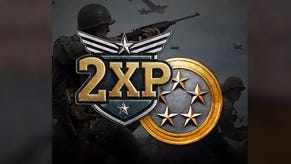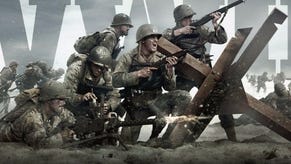How Call of Duty: WW2 trivialises history
Can a game represent the true horror of the Holocaust?
WARNING: This piece contains major spoilers for Call of Duty: WW2's campaign.
The end of the Second World War unearthed the truth of the darkest days for humanity.
More than six million Jews and three million others were rounded up, dehumanised and shoved into cattle cars before being locked up in one of 40,000 concentration camps, where they were experimented on, shot and gassed.
The scale of the Nazis' killing machine is hard to comprehend more than 70 years on, so how do you replicate those horrors in a visual medium designed for entertainment?
Sledgehammer Games decided to rise to the challenge by promising fans that its latest instalment in the Call of Duty franchise would not "shy away" from history. It is one of only a few select games to acknowledge the Holocaust. The game's efforts, however, fall short.

I have no doubt that Sledgehammer intended to take us on a journey of self-discovery, showing how far soldiers would go for one another in the face of war. Ultimately, however, the game's story - and more specifically its epilogue - lacks conviction, and most importantly it lacks accuracy.
In the campaign, players join the front line with Private Ronald Daniels in the US First Infantry Division during the latter stages of the war, but in the game's third act, when his Jewish best friend, Private Robert Zussman, is captured by German forces and sent to a concentration camp, the story takes a new turn.
"Take out your camera, the world has got to know," Daniels orders his comrade Private Drew "College" Stiles as they move silently through an abandoned hut in a burning prisoner of war camp. Where are those horrors though? The bodies of half a dozen soldiers poke out of the bunk beds and sag from the firing posts, yet the true cruelty of the Nazis to the millions they believed to be untermenschen or subhuman is hidden from view.
The monologue driving the epilogue suggests the division has come across those camps, with one of Stiles' pictures of three Jewish survivors standing behind barbed wire serving as a testament to the truth being shown. But surely focusing on the discovery of one of these camps would have been a better way of presenting the facts, especially considering that the division, known as the Big Red One, did indeed liberate two subcamps of Flossenbürg in 1945.

Instead, Call of Duty: WW2 stays true to its storyline, and despite Sledgehammer Games listing Band of Brothers as one of its influences, the game refuses to cross the threshold of a taboo subject and show the player the inner workings of these camps and the toll this had not only on the prisoners - but on the soldiers too. This continues for the rest of the storyline, where Daniels charges into the forest beyond the camp to save Zussman from the clutches of a commandant.
Crucially, Sledgehammer Games fails to provide the player with the context of the period, and in reality hundreds or thousands of prisoners who survived the initial destruction of the camp would have been sent on a death march; making Zussman's encounter in the epilogue even more unbelievable. Instead, Call of Duty: WW2, like all World War Two games, goes back to the trope of a successful military campaign and its tidy resolution.
There was no resolution though for the millions of Jews and millions of others deemed inferior by the Nazis. They died because Hitler indoctrinated the masses through a managed propaganda machine, which spouted anti-Semitic rhetoric that developed into a fully-fledged programme enforced by the law. Those who survived the Holocaust can attest to that and arguably their word is the closest we'll ever get to understanding and representing the Holocaust.
The idea that the Holocaust can never be truly recreated in visual form has been echoed by survivors living through what historians called the 'Holocaust consciousness' - an increase in public awareness of the Holocaust through popular history, documentaries and testimonies through to memorial days. As a result, some of these creations that came from the apex of this consciousness have been heavily critiqued by those who experienced it themselves.

Steven Spielberg's Schindler's List is one such work. Despite winning a number of awards, Holocaust survivors and academics argue the film sexualised female prisoners, trivialised history by recreating the camp outside Auschwitz's infamous gates and implied that Jews were naturally weak and had to be saved.
Similarly, NBC's miniseries Holocaust has also came under fire by survivors for turning the unforgettable historical event into an American soap opera. Elie Wiesel, whose work Night remains one of the most haunting testimonies into what Jews experienced inside the camps, called the televisualisation of the Holocaust "untrue, cheap, offensive and an insult," and argued there is no art form that would allow someone to capture the true horrors of those imprisoned.
And he's right. A work of fiction, whether that is a book, a film or a video game, will never recreate the conditions and the stories of those who experienced the Holocaust. However, in the modern age where digital mediums are king, keeping the Holocaust consciousness alive and kicking is crucial.
Sledgehammer Games tries to play into that consciousness by making the decision to depict the Holocaust. Sadly that risk hasn't paid off. The developers focused on the wrong part of the storyline and relied on the contextualisation of the period. As a result, they trivialised the memory of the millions of people who died because their race, religion, political beliefs and sexual orientation didn't fit with the ideas of a singular man.
Three weeks on from finishing the campaign, I can't help but feel that Sledgehammer Games should have done more - or even less - to do history justice.








